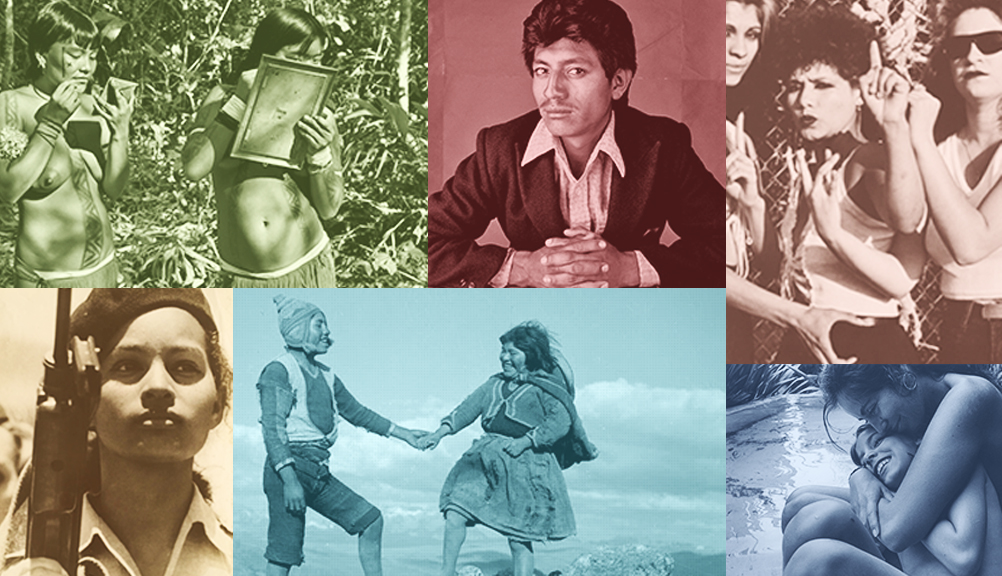For much of its history, Latin American photography has gone largely unnoticed by Western media, curators, and academia. Despite this slight, a culture of documentary photography flourished from Mexico to Argentina. At a time of great political turmoil in Latin America, the following photographers questioned societal conditions, uplifted the downtrodden, and challenged repressive regimes. While they may have touched on similar themes, no two photographers are alike. Each revealed a unique sensibility that came across in their choice of subject matter and the style and form they experimented with to tell their stories.
1
Graciela Iturbide

Born in Mexico City in 1942, Graciela Iturbide rejected categories of photography to pursue a unique style that incorporated elements of photojournalism, visual anthropology, and surrealist art. Iturbide started out as the student of renowned photographer Manuel Alvarez Bravo before she embarked on her own career, which encompassed documenting the indigenous Seris and Zapotecs of Mexico, cholo culture in East Los Angeles, and the third-gender hijras of India. While Iturbide claims her work is apolitical in nature, her lens tends to follow the most marginalized communities in society.
2
Nacho Lopez

The images of Mexican pioneer Ignacio “Nacho” Lopez reflect the socio-political currents of the 1950s. They captured Mexico’s search for a national identity by focusing on the country’s working-class and indigenous populations. During his time as a photojournalist – Lopez worked for various weekly magazines – he became the first in Mexico to develop photo essays. Despite his work as a reporter, Lopez preferred to portray everyday urban life in Mexico City instead of the elite, celebrities, or politicians. Primarily a documentarian, Lopez is also known for incorporating performance art in his photography, particularly in one of his most famous series “Cuando una mujer guapa parte plaza por Madero.”
3
Martín Chambi

Martín Chambi is one of the first indigenous photographers of Latin America. Born in 1891 in Peru, the Quechua photographer considered himself a voice for the indigenous communities of the Andes. Chambi first came into contact with photography as a gold miner in his teenage years and later moved to Cusco – a booming city at the time due to growing tourism – to pursue a career in portraiture. There, he portrayed its people, architecture, the Machu Picchu ruins, and landscapes.
While he made a living taking portraits of the wealthy elite, he also brought Quechua people into his studio. Throughout his life, he roamed the Andes, documenting the rural towns and people he encountered on his trips. Chambi is credited with pioneering the use of portraiture and landscape photography in Peru.
4
Sara Facio

Mercedes Sosa, Pablo Neruda, Jorge Luis Borges, and Gabriel Garcia Marquez are only a select few of the celebrated artists, musicians, actors, and writers the Argentine photographer Sara Facio portrayed throughout her artistic career. Facio also collaborated with fellow photographer Alicia d’Amico and novelist Julio Cortázar in the production of two photo books:Buenos Aires, Buenos Aires, an ode to the everyday moments lived on the streets of the capital city, and Humanario, an unflinching study of conditions in a mental asylum.
In 1973, Facio co-founded La Azotea, the first editorial house in Latin America. A champion of Latin American art, Facio, along with Guatemalan photographer Maria Cristina Orive, published photo books by Martín Chambi, Eduardo Gil, Adriana Lestido, Sebastián Szyd, and more.
5
Sebastião Salgado

Brazil-born Sebastião Salgado is a legendary documentary photographer who traveled the globe, documenting social injustices in more than 120 countries. A trained economist, Salgado started his artistic career taking photographs while on work trips to Africa for the World Bank. After a few years of devoting his career to photojournalism, he joined the iconic photo cooperative Magnum Photos in 1979. His series, The Other, Americas, Sahel, Workers, Migrations, and Genesis, are long-term projects that cover large swaths of the globe and explore universal themes.
6
Sergio Larrain

Before withdrawing from his career for a quiet life in the countryside, the late Chilean Sergio Larrain was widely lauded for his street photography, particularly his series los abandonados, where he documented the homeless children of Santiago. His professional career only lasted 10 years, but during this period he worked as a freelance photojournalist in Europe and the Middle East and joined Magnum Photos in 1960.
A devotee of Buddhist philosophy, Larrain took a humanistic and poetic approach to making images. His most celebrated project, Valparaiso, rendered the streets, bars, brothels, and cabarets of the diminishing port city quite romantically and was accompanied by text from Chilean poet Pablo Neruda.
7
Adriana Lestido

“I think the mother-daughter relationship is one of, if not the most, complicated relationships that exist.” Argentine photographer Adriana Lestido started out her career as a photojournalist working for major newspapers such as La Voz del Interior before she pivoted toward long-term projects that exposed the harsh realities women lived in society, particularly during the Dirty War in Argentina. Her most lauded image is a black-and-white photograph of a woman and daughter demanding the return of the disappeared in Argentina, which would come to represent the women-led resistance against the dictatorship.
8
Alberto Korda

While the Cuban photographer Alberto Korda may not be known to many by his name, his monochromatic portrait of Ernesto “Che” Guevara has traveled around the world and is one of the most reproduced images in history. Korda was a fashion photographer until the onset of the Cuban Revolution in 1953 changed the course of his career. He documented the leaders of the armed insurrection for the newly-established publication Revolution and later became Fidel Castro’s personal photographer for 10 years.
9
Daniel Hernández-Salazar

Born in Guatemala in 1957, Daniel Hernández-Salazar has devoted his photographic career to bearing witness and challenging the horrors of the country’s 36-year long civil war. In the 1980s, Hernández-Salazar worked as a photojournalist for the Associated Press, Reuters, and the Agence France Presse. At the end of the war, Hernández-Salazar continued to photograph the repercussions of the violence, portraying the families of prisoners who were disappeared during the civil war. As an independent photographer, his work has centered on the development of historical memory of the war and genocide.
10
Paz Errázuriz

When the Pinochet regime took power of the Chilean state in 1973, Paz Errázuriz co-founded the Association of Independent Photographers, an audacious group of street photographers who documented the resistance against the dictatorship. Despite the repression and censorship of photographers, Errázuriz captured the female dissidents in a series titled Mujeres Por La Vida. She also took an interest in marginalized communities in a series of long-term projects. She spent months and years photographing sex workers, psychiatric patients, circus workers, and the blind, often defying state regulations that restricted women from accessing brothels, psychiatric wards, boxing clubs, and shelters.



